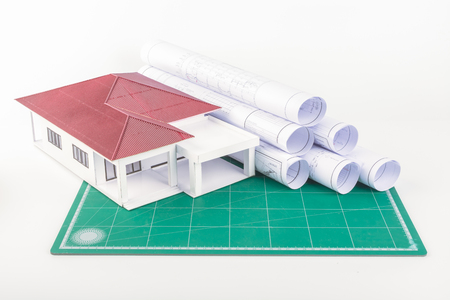1. Understanding the Principles of Xeriscaping
Xeriscaping is a landscaping method designed to reduce or eliminate the need for supplemental water from irrigation. Its especially popular in arid and drought-prone regions of the U.S., like the Southwest, but its principles can be applied anywhere homeowners want a beautiful, low-maintenance garden that conserves water year-round.
What Makes Xeriscaping Different?
Unlike traditional lawns or gardens that often require frequent watering, mowing, and fertilizing, xeriscaping focuses on sustainability and efficiency. It’s all about working with nature instead of against it. Heres what sets it apart:
| Xeriscaping Principle | What It Means |
|---|---|
| Water Conservation | Using drought-tolerant plants and efficient irrigation methods to drastically reduce water usage. |
| Soil Improvement | Amending soil with compost or organic matter to improve drainage and nutrient retention. |
| Strategic Plant Placement | Grouping plants by their water needs (called hydrozoning) to maximize efficiency and minimize waste. |
The Role of Water Conservation
Saving water is at the heart of xeriscaping. Instead of overhead sprinklers that waste water through evaporation, drip irrigation systems are commonly used because they deliver moisture directly to plant roots where its needed most. Mulching also plays a key role by helping soil retain moisture and reducing evaporation.
Improving Your Soil
Before planting, it’s important to test your soil’s texture and nutrient content. Sandy soils drain too quickly, while clay soils may hold too much water. Adding compost or well-rotted organic material helps strike a balance, improving both drainage and water retention—key factors for a thriving xeriscape garden.
Smart Plant Placement
A successful xeriscape layout takes into account sun exposure, wind patterns, and plant compatibility. By placing high-water-use plants closer to your home and drought-tolerant varieties farther out, you create “hydrozones” that make watering more efficient. Native plants are particularly great choices since they’re already adapted to your local climate and soil conditions.
Example Hydrozoning Layout:
| Zone | Description | Plant Examples |
|---|---|---|
| High-Water Zone | Closest to house; shaded areas; occasional irrigation | Lavender, Coral Bells, Ferns |
| Moderate-Water Zone | Part-sun areas; minimal supplemental watering | Sage, Coneflower, Yarrow |
| Low-Water Zone | Full sun; drought-tolerant; no irrigation needed once established | Agave, Sedum, Blue Grama Grass |
Pro Tip:
If youre unsure where to start, visit your local extension office or native plant nursery. They can offer region-specific advice on soil prep and which plants thrive in your area.
Xeriscaping is more than just planting cactus and rocks—its about thoughtful design that brings beauty with less effort and fewer resources.
2. Choosing the Right Drought-Tolerant Plants
When designing a xeriscape garden that looks beautiful all year long, one of the most important steps is choosing the right plants. The key is to focus on native and climate-appropriate species that not only survive but thrive in low-water environments. These plants are often more resistant to pests, require less maintenance, and offer color and texture throughout each season.
Why Native and Climate-Appropriate Plants Matter
Native plants have adapted over time to your local climate and soil conditions, making them naturally drought-tolerant and easy to care for. Climate-appropriate plants may not be native but still perform well in your region’s weather patterns. Together, these plants reduce the need for irrigation, fertilizers, and pesticides—saving you time and money while supporting local ecosystems.
Plant Selection Tips by Season
To ensure year-round appeal, it’s helpful to mix and match plants that shine during different seasons. Here’s a guide to help you choose:
| Season | Recommended Plants | Features |
|---|---|---|
| Spring | Penstemon, California poppy, Blue flax | Bright blooms; attract pollinators |
| Summer | Lavender, Russian sage, Coneflower | Heat-tolerant with vibrant colors |
| Fall | Autumn sage, Goldenrod, Muhly grass | Warm hues; late bloomers add texture |
| Winter | Red twig dogwood, Yucca, Evergreen juniper | Evergreen foliage; striking shapes or color contrasts |
Popular Drought-Tolerant Plant Categories
Succulents and Cacti
These are excellent choices for dry climates due to their ability to store water. Varieties like agave, sedum, and prickly pear cactus can add architectural interest to your garden.
Ornamental Grasses
Drought-resistant grasses such as blue fescue or feather reed grass provide movement and texture. Many also change color with the seasons for added visual interest.
Flowering Perennials
Select perennials like black-eyed Susan or gaillardia for consistent blooms year after year with minimal upkeep.
Consider Sunlight and Soil Conditions
Before planting, observe how much sunlight your garden receives daily and check the type of soil you have. Some drought-tolerant plants prefer full sun and sandy soil, while others do well in partial shade or clay-based soils. Matching the plant to its ideal conditions will help it thrive with little intervention.
Create Visual Balance with Color and Texture
A great xeriscape garden isnt just about surviving—it should also look great. Combine different plant heights, leaf textures, and bloom colors to create depth and interest. Use evergreens or structural plants like yucca or ornamental grasses as anchors around seasonal flowering varieties.
With thoughtful selection of native and climate-suited plants, your xeriscape garden can be both low-maintenance and visually appealing throughout the year.

3. Planning for Year-Round Visual Interest
Creating a xeriscape garden that looks beautiful in every season is all about balance and smart planning. While water conservation is key, you don’t have to sacrifice curb appeal. By mixing seasonal colors, textures, and structure, your landscape can stay visually appealing from winter through summer.
Use Plants with Seasonal Color Changes
Select plants that offer changing colors throughout the year. Some shrubs bloom in spring, while others have vibrant fall foliage or evergreen leaves that provide color even in winter.
| Season | Plant Suggestions | Color/Feature |
|---|---|---|
| Spring | Desert Marigold, Red Yucca | Bright yellow blooms, red flowers |
| Summer | Russian Sage, Blanket Flower | Purple spikes, red/orange petals |
| Fall | Muhly Grass, Autumn Sage | Pink plumes, deep red blooms |
| Winter | Evergreen Juniper, Agave | Green foliage, sculptural form |
Incorporate a Variety of Textures
A xeriscape with mixed leaf shapes and plant forms adds visual depth. Combine spiky agaves with soft ornamental grasses or round-leaved succulents to keep the space interesting. Texture plays an important role when flower color is minimal during certain seasons.
Texture Pairing Ideas:
- Agave + Blue Fescue: Sharp and soft contrast
- Lamb’s Ear + Yucca: Fuzzy vs. bold structure
- Creeping Thyme + Sedum: Groundcover texture mix
Add Structural Elements for All-Season Appeal
Hardscaping helps anchor your landscape visually throughout the year. Features like decorative rocks, gravel pathways, raised beds, and garden art add structure when plants are dormant or not in bloom. Even small retaining walls or boulders can make a big impact.
Simple Structural Enhancements:
- Boulders: Natural focal points that never fade
- Drought-tolerant planters: Add height and symmetry
- Corten steel edging: Clean lines with rustic charm
- Sculptural elements: Wind chimes, garden stakes, or pottery for personality year-round
A thoughtful combination of seasonal color, diverse textures, and structural features will help you design a xeriscape garden that remains inviting no matter the time of year. It’s all about layering interest and planning ahead to create a yard you’ll love every month.
4. Incorporating Hardscape Elements
Adding hardscape features is a smart way to make your xeriscape garden both beautiful and low-maintenance. Hardscaping refers to the non-plant elements in your landscape design—things like gravel, stone pathways, raised beds, and decorative rocks. These features help reduce the need for watering, weeding, and mowing while also giving your yard a clean, organized look that lasts all year long.
Benefits of Hardscaping in Xeriscaping
Hardscape elements not only cut down on maintenance but also enhance the visual appeal of your outdoor space. Here are some key advantages:
- Water conservation: Less grass means less water usage.
- Weed control: Gravel and mulch act as natural weed barriers.
- Structure and flow: Pathways and raised beds define areas and guide movement through the garden.
- Year-round beauty: Stones and structures don’t change with the seasons, keeping your yard attractive year-round.
Popular Hardscape Features for Xeriscape Gardens
You can choose from a variety of hardscape options depending on your style preferences and budget. Below is a quick comparison to help you decide what fits best in your space:
| Feature | Main Benefit | Best Use |
|---|---|---|
| Gravel | Low-cost ground cover, excellent for drainage | Pathways, between plants, or open areas |
| Stone Pathways | Adds structure and easy navigation | Main walkways or stepping stones through plant beds |
| Raised Beds | Easier planting and better soil control | Vegetable or flower gardens within xeriscape zones |
| Boulders & Decorative Rocks | Adds natural texture and focal points | Slope control or accent pieces around plants |
Tips for Installing Hardscape Elements
- Plan ahead: Sketch out your layout before starting so everything has its place.
- Use weed barriers: Place landscape fabric under gravel or stones to prevent weeds from growing through.
- Select local materials: Using rocks and stones native to your area can help your garden blend naturally with the environment.
- Create contrast: Mix textures—like smooth river rocks next to rough boulders—for added visual interest.
Combining Hardscape with Plants
The best xeriscape designs balance hardscape with drought-tolerant plants. Surround gravel paths with clusters of succulents or native grasses. Use raised beds to showcase colorful perennials. This mix of living and non-living elements brings harmony to your garden while keeping upkeep minimal.
Your Next Step: Lay the Foundation
If youre ready to create a stunning xeriscape yard that practically takes care of itself, start by planning where your hardscape features will go. They’ll set the tone for everything else—and give you a stylish, practical foundation that stands up to every season.
5. Low-Maintenance Tips and Long-Term Care
Keeping your xeriscape garden looking fresh and healthy all year doesnt have to be a chore. With a few smart strategies, you can reduce time spent on upkeep while still enjoying a vibrant outdoor space. Below are some practical tips to help you maintain your xeriscape garden with minimal effort.
Smart Mulching
Mulch is one of the most effective tools for low-maintenance gardening. It helps retain soil moisture, suppress weeds, and regulate soil temperature. Choose organic mulches like shredded bark or wood chips for added nutrients, or go with inorganic options like gravel or decomposed granite for a more permanent solution.
Mulch Comparison Table
| Type | Benefits | Best For |
|---|---|---|
| Shredded Bark | Improves soil quality, decomposes over time | Flower beds, around shrubs |
| Gravel | Long-lasting, excellent drainage | Cactus/succulent areas, paths |
| Decomposed Granite | Natural look, prevents erosion | Walkways, open areas between plants |
Irrigation Techniques That Save Time and Water
A well-designed irrigation system makes a big difference in keeping your xeriscape garden thriving. Drip irrigation is ideal because it delivers water directly to the plant roots where it’s needed most. Consider pairing it with a timer to automate watering based on seasonal needs.
Irrigation Quick Tips:
- Use drip lines: They reduce evaporation and target specific plants.
- Add timers: Automate watering early in the morning to minimize water loss.
- Group plants by water needs: This allows more efficient scheduling.
Create a Simple Maintenance Schedule
You don’t need a green thumb or hours of free time to keep your xeriscape garden in top shape. A seasonal care schedule helps you stay on track without feeling overwhelmed.
Sample Seasonal Maintenance Schedule
| Season | Main Tasks |
|---|---|
| Spring | Check irrigation system, prune dead branches, refresh mulch if needed |
| Summer | Monitor for pests, adjust watering frequency during heat waves |
| Fall | Trim back perennials, remove fallen leaves, inspect plant health |
| Winter | Minimal work; check mulch coverage, protect sensitive plants from frost if needed |
By using mulch wisely, setting up an efficient irrigation system, and following a simple maintenance routine, you can enjoy the beauty of your xeriscape garden all year long—without the hassle.


